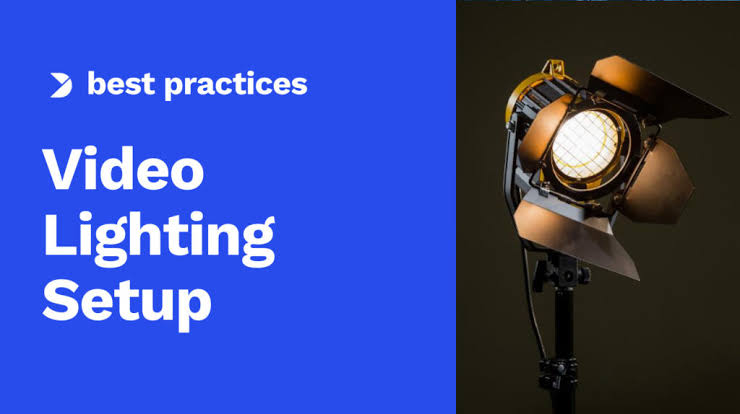Discover how to master lighting in videography with essential techniques and best practices. Learn about different light sources, key lighting methods, and equipment setup to enhance your video projects. Achieve professional results by understanding light’s role in creating mood, clarity, and impact.
Grasping the Importance of Illumination in Filmmaking: Methods and Recommended Approaches
Illumination is a factor, in video production impacting the atmosphere, sharpness and overall caliber of a video. Becoming proficient in lighting methods can enhance your videography abilities and yield polished outcomes. This article delves into lighting principles, techniques and recommended practices to assist you in attaining lighting for your video endeavors.
The Role of Lighting in Videography
In videography lighting plays a role in shaping how subjects appear on screen. Good lighting can boost a videos charm emphasize features and express feelings or concepts. On the hand inadequate lighting may lead to outcomes like shadows, overexposure or underexposure that can diminish the overall quality of the video.
Understanding Light Sources
In videography there are three main types of light sources used: natural light, artificial light and a combination of both. Each type comes with its own set of advantages and applications.
Natural Light: This refers to the light from the sun or daylight which has a soft and diffused quality. Its commonly employed for shoots outdoors or when aiming for an appearance. However natural light can be unpredictable requiring adjustments based on factors like time of day or weather conditions.
Artificial Light: This category encompasses a range of fixtures such as LED panels, softboxes and tungsten lights. Artificial lighting provides control and consistency compared to light. It's well suited for indoor shoots or scenarios where specific lighting effects are desired.
Mixed Light: By blending natural and artificial light sources a dynamic and balanced lighting setup can be achieved. This method offers flexibility allowing for the creation of specific looks or moods.
Key Lighting Techniques
In videography various lighting techniques are employed to achieve effects. Grasping and implementing these methods can greatly enhance the quality of your footage.
One essential setup is known as lighting. It consists of three key light sources the light, fill light and backlight. The light serves as the source illuminating the subject while the fill light is placed opposite to soften shadows and create balanced lighting. The backlight also referred to as the hair light is positioned behind the subject to add depth and distinguish them from the background.
Another technique called Rembrandt lighting draws its name from the renowned painter Rembrandt. This approach produces a triangular highlight on the subjects cheek by angling the key light at 45 degrees to the subject and slightly above their eye level. Rembrandt lighting introduces an element of drama and dimension to the subjects face making it well suited for portraits and interviews.
Loop Lighting: Loop lighting is a technique that involves placing the light source at an angle of 30 to 45 degrees from the subjects face. This setup casts a shadow under the nose, forming a loop shape. It's a flattering approach that gives a natural and balanced appearance. It's commonly used in beauty photography and fashion videography.
Butterfly Lighting: Also referred to as lighting this method entails positioning the light source directly in front of and above the subject. This arrangement creates a butterfly shaped shadow under the nose. It accentuates the subjects cheekbones and is frequently employed in glamour and beauty photography.
Lighting Equipment and Setup
Choosing the lighting gear and setting it up properly are vital for achieving the results you want. Here are some key tools and factors to consider when it comes to lighting in videography.
Light Fixtures: There are types of light fixtures each with their own unique features. LED lights are favored for their efficiency and customizable color temperatures. Softboxes help spread light evenly creating a soft glow. Tungsten lights emit a warm, natural light but can produce heat. Knowing the strengths and weaknesses of each type will guide you in selecting the option that suits your needs best.
Light Modifiers: Modifiers like diffusers, reflectors and gels can change the quality and direction of light. Diffusers soften light and minimize shadows while reflectors bounce light onto the subject to brighten up areas. Gels can alter the temperature of light enabling effects or blending different light sources seamlessly.
Positioning Lights: The positioning of lights plays a role, in achieving the desired look. Try out angles and distances to discover the ideal arrangement for your scene. Utilize light stands or mounts to secure the lights in place and prevent any unintentional movements while shooting.
Best Practices for Lighting in Videography
To optimize your lighting setup consider these tips.
Plan Your Lighting. Before you start shooting outline your lighting arrangement based on the scene and desired atmosphere. Think about which lighting will best highlight the subject and enhance the background.
Control Light Sources. Reduce unwanted light and glare by managing your light sources. Use flags or barn doors to block or shape light and tweak the brightness of your lights to avoid overexposure.
Monitor Lighting Consistency. Ensure consistent lighting throughout your shoot for a unified appearance. Use a meter or monitor to check for color temperature uniformity and make adjustments as necessary.
Test and Adjust. Always test your lighting setup before filming to spot any issues and make adjustments. Try out different settings and techniques to achieve the best outcome.
To sum it up mastering lighting in video production requires knowledge of sources implementing lighting methods and utilizing equipment. By strategizing your lighting arrangement managing sources and ensuring consistency you can produce videos that are visually impressive and effectively communicate your desired message and feelings.
